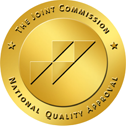Content reviewed by Karen Rubenstein, LMFT
Substance use disorders (SUDs) continue to wreak havoc on the lives of individuals everywhere. For successful recovery, treatment programs must offer a step-by-step framework that patients can follow to help identify and reflect on their progress and know where to go next on their healing journey. This concept is the very nature of 12-step programs.
One of the most available treatment programs for substance use disorders is the 12-Step program. The 12-Step program curriculum originated from a member of Alcoholics Anonymous (AA) almost 100 years ago and served as the foundation for AA and other support groups. The Twelve Steps consists of 12 actionable principles that will guide individuals through their sobriety journey.
The Twelve Steps Explained
Before jumping into a 12-Step program, it may help to become familiar with each step outlined in the book of Alcoholics Anonymous, otherwise known as the “Big Book.”
Step One
We admitted we were powerless over alcohol — that our lives had become unmanageable.
Step one involves admitting and accepting powerlessness over addiction. This Step helps to relabel addiction as a disease rather than a behavior controlled by willpower.
Step Two
Came to believe that a Power greater than ourselves could restore us to sanity.
Step two encourages individuals to place faith in a power greater than themselves. While “higher power” is often associated with God, ultimately, every person gets to decide what that term means to them. This Step helps to show patients a way to move forward.
Step Three
Made a decision to turn our will and our lives over to the care of God as we understood Him.
Step three involves engaging with an individual’s higher power conception. It begins a process of conversation and reflection and often requires intimate time with prayer or meditation.
Step Four
Made a searching and fearless moral inventory of ourselves.
Step four involves an honest reflection of one’s addictive behaviors, noting what needs to be changed. Step three prepares patients for this process. Reflection can often be uncomfortable as it requires individuals to consider their wrongdoings and the consequences caused by substance use.
Step Five
Admitted to God, to ourselves and to another human being the exact nature of our wrongs.
Step five calls an individual to admit their wrongdoings. This confession sets an individual up for ridding feelings of shame and guilt that often perpetuate the cycle of addiction.
Step Six
Were entirely ready to have God remove all these defects of character.
Step six motivates an individual to choose improvement over perfection. This Step offers a new beginning for individuals ready for actual change in their lives.
Step Seven
Humbly asked Him to remove our shortcomings.
Step seven encourages connection with an individual’s higher power. It involves humility by recognizing that individuals can not get through anything solely on their own and need support from a power greater than themselves to stay sober.
Step Eight
Made a list of all persons we had harmed and became willing to make amends to them all.
Step eight calls for an individual to acknowledge social and interpersonal damages. It involves holding oneself accountable for the harm one may have caused others at the cost of their substance use.
Step Nine
Made direct amends to such people wherever possible, except when to do so would injure them or others.
Step nine drives an individual to take action to fix their social damage. This action entails offering amends and admitting wrongdoing during active addiction and alcoholism. Occasionally, if further harm may result from interaction, the safest route may be to make amends through indirect contacts, such as a written letter.
Step Ten
Continued to take personal inventory and when we were wrong promptly admitted it.
Step ten is an active stage that involves immediate reflection after making a mistake. This prompt ownership of wrongs helps keep individuals accountable for their actions and stay focused on recovery.
Step Eleven
Sought through prayer and meditation to improve our conscious contact with God as we understood Him, praying only for knowledge of His will for us and the power to carry that out.
Step eleven is also an active stage that requires consistent communication with a higher power of one’s understanding. Individuals must listen — through meditation or mindfulness — with the intention of growth and reflection. This stage is critical when working through feelings of guilt or burden and gratitude and appreciation.
Step Twelve
Having had a spiritual awakening as the result of these Steps, we tried to carry this message to alcoholics and practice these principles in all our affairs.
Step twelve reinforces the idea of reflecting on internal lessons while using those lessons to positively direct others towards a successful recovery. The insight that an individual learns through a 12-Step program will inspire others to share the beauty of sobriety and the value of recovery.
Casa Palmera uses a 12-Step framework in both individual and group therapy sessions. We offer a wide range of treatment programs to help assist you on your journey to sobriety or recovery from co-occurring disorders. We believe in the power of the Twelve Steps to effectively guide treatment and recovery. To learn more about the steps, or for more about our treatment center, contact us today.




